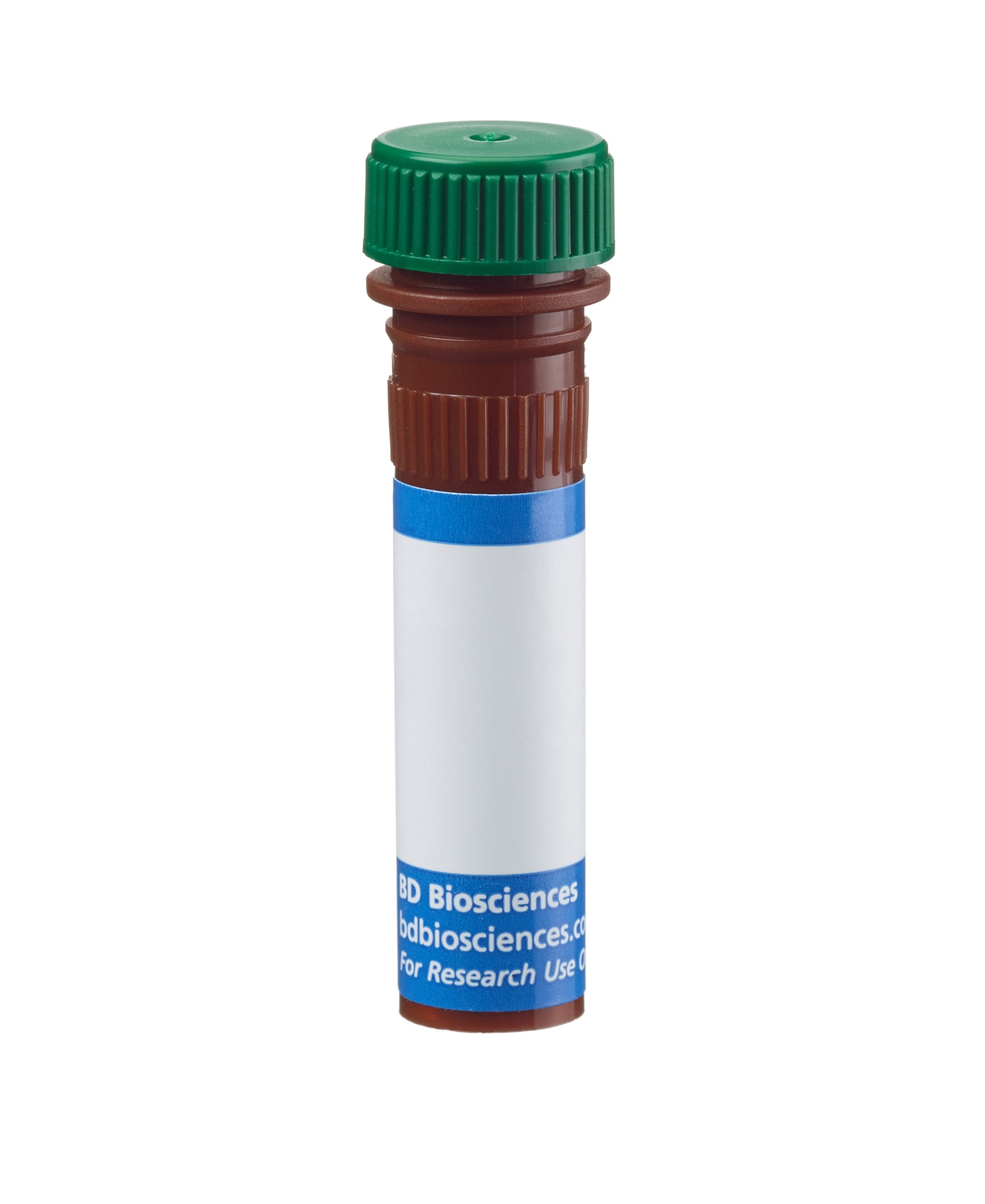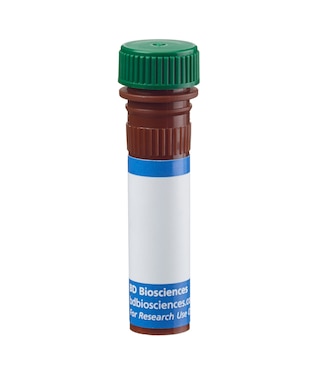-
抗体試薬
- フローサイトメトリー用試薬
-
ウェスタンブロッティング抗体試薬
- イムノアッセイ試薬
-
シングルセル試薬
- BD® AbSeq Assay | シングルセル試薬
- BD Rhapsody™ Accessory Kits | シングルセル試薬
- BD® Single-Cell Multiplexing Kit | シングルセル試薬
- BD Rhapsody™ Targeted mRNA Kits | シングルセル試薬
- BD Rhapsody™ Whole Transcriptome Analysis (WTA) Amplification Kit | シングルセル試薬
- BD Rhapsody™ TCR/BCR Profiling Assays (VDJ Assays) | シングルセル試薬
- BD® OMICS-Guard Sample Preservation Buffer
-
細胞機能評価のための試薬
-
顕微鏡・イメージング用試薬
-
細胞調製・分離試薬
-
- BD® AbSeq Assay | シングルセル試薬
- BD Rhapsody™ Accessory Kits | シングルセル試薬
- BD® Single-Cell Multiplexing Kit | シングルセル試薬
- BD Rhapsody™ Targeted mRNA Kits | シングルセル試薬
- BD Rhapsody™ Whole Transcriptome Analysis (WTA) Amplification Kit | シングルセル試薬
- BD Rhapsody™ TCR/BCR Profiling Assays (VDJ Assays) | シングルセル試薬
- BD® OMICS-Guard Sample Preservation Buffer
- Japan (Japanese)
-
Change country/language
Old Browser
Looks like you're visiting us from {countryName}.
Would you like to stay on the current country site or be switched to your country?




Analysis of CD371 (CLEC12A) expression on human leucocytes - Comparison of BD Horizon™ BB515- and FITC-conjugated antibodies. Panel 1 - Whole blood was stained with BB515 Mouse IgG2a, κ Isotype Control (Cat. No. 564515; Top Left Plot), BB515 Mouse Anti-Human CD371 (Clec12A) (565325; Top Right Plot), or FITC Mouse Anti-Human CD371 (Clec12A) (Cat. No. 562569; Bottom Right Plot). Erythrocytes were lysed with BD FACS™ Lysing Solution (Cat. No. 349202). Panels 2 and 3 - Human peripheral blood mononuclear cells (PBMC) were stained with BD Horizon BUV395 Ant-HLA-DR (Cat. No. 564040), BD Horizon BV421 Anti-CD11c (Cat. No. 562561), APC Anti-CD123 (Cat. No. 560087), and a PerCP-Cy™5.5-conjugated Lineage Cocktail of antibodies specific for Human CD3 (Cat. No. 560835), CD14 (Cat. No. 550787), CD19 (Cat. No. 561295), and CD56 (Cat. No. 560842). Cells were further stained with either BB515 Mouse IgG2a, κ Isotype Control (dashed line histograms), BB515 Anti-Human CD371 (Clec12A) (bold solid line histograms), or FITC Anti-Human CD371 (Clec12A) antibody (thin solid line histograms). Fluorescence contour plots and histograms were derived from gated events with the forward and side light-scatter characteristics of viable leucocytes (Panel 1) or PBMC (Panel 2). Flow cytometric analysis was performed using a BD™ LSR II Flow Cytometer System.


BD Horizon™ BB515 Mouse Anti-Human CD371 (Clec12A)

Regulatory Statusの凡例
Any use of products other than the permitted use without the express written authorization of Becton, Dickinson and Company is strictly prohibited.
Preparation and Storage
推奨アッセイ手順
BD™ CompBeads can be used as surrogates to assess fluorescence spillover (Compensation). When fluorochrome conjugated antibodies are bound to CompBeads, they have spectral properties very similar to cells. However, for some fluorochromes there can be small differences in spectral emissions compared to cells, resulting in spillover values that differ when compared to biological controls. It is strongly recommended that when using a reagent for the first time, users compare the spillover on cells and CompBead to ensure that BD Comp beads are appropriate for your specific cellular application.
For optimal and reproducible results, BD Horizon Brilliant Stain Buffer should be used anytime two or more BD Horizon Brilliant dyes are used in the same experiment. Fluorescent dye interactions may cause staining artifacts which may affect data interpretation. The BD Horizon Brilliant Stain Buffer was designed to minimize these interactions. More information can be found in the Technical Data Sheet of the BD Horizon Brilliant Stain Buffer (Cat. No. 563794/566349) or the BD Horizon Brilliant Stain Buffer Plus (Cat. No. 566385).
For optimal results, it is recommended to perform 2 washes after staining with antibodies. Cells may be prepared, stained with antibodies and washed twice with wash buffer per established protocols for immunofluorescence staining, prior to acquisition on a flow cytometer. Performing fewer than the recommended wash steps may lead to increased spread of the negative population.
Product Notices
- This reagent has been pre-diluted for use at the recommended Volume per Test. We typically use 1 × 10^6 cells in a 100-µl experimental sample (a test).
- An isotype control should be used at the same concentration as the antibody of interest.
- Caution: Sodium azide yields highly toxic hydrazoic acid under acidic conditions. Dilute azide compounds in running water before discarding to avoid accumulation of potentially explosive deposits in plumbing.
- For fluorochrome spectra and suitable instrument settings, please refer to our Multicolor Flow Cytometry web page at www.bdbiosciences.com/colors.
- The manufacture, use, sale, offer for sale, or import of this product is subject to one or more patents or pending applications. This product, and only in the amount purchased by buyer, may be used solely for buyer’s own internal research, in a manner consistent with the accompanying product literature. No other right to use, sell or otherwise transfer (a) this product, or (b) its components is hereby granted expressly, by implication or by estoppel. Diagnostic uses require a separate license.
- BD Horizon Brilliant Stain Buffer is covered by one or more of the following US patents: 8,110,673; 8,158,444; 8,575,303; 8,354,239.
- Please refer to http://regdocs.bd.com to access safety data sheets (SDS).
- Please refer to www.bdbiosciences.com/us/s/resources for technical protocols.
関連製品






The 50C1 monoclonal antibody specifically binds to human CD371 which is also known as Clec12A (C-type lectin domain family 12 member A), C-type lectin-like molecule 1 (CLL-1), myeloid inhibitory C-type lectin-like receptor (MICL), or dendritic cell-associated lectin 2 (DCAL-2). It is expressed on a variety of cells including monocytes, macrophages, dendritic cells, and granulocytes and perhaps some NK cells. Clec12A is a member of the C-type lectin/C-type lectin-like domain (CTL/CTLD) superfamily. It is a 30 kDa type II transmembrane glycoprotein that has one single C-type lectin-like domain and one cytoplasmic immunoreceptor tyrosine-based inhibitory motif (ITIM). Clec12A has similarity with the β-glucan receptor (Dectin-1) and LOX-1 with high N-glycosylation. There are at least five isoforms due to alternative transcript splicing. Signaling through Clec12A can induce internalization of Clec12A, dendritic cell maturation and the production of cytokines including IL-12. Clec12A may also serve as a negative regulator of activated leukocytes recruited to sites of inflammation.
The antibody was conjugated to BD Horizon BB515 which is part of the BD Horizon Brilliant™ Blue family of dyes. With an Ex Max near 490 nm and an Em Max near 515 nm, BD Horizon BB515 can be excited by the blue laser (488 nm) laser and detected with a 530/30 nm filter. This dye has been exclusively developed by BD Biosciences and is up to seven times brighter than FITC with less spillover into the PE channel. Due to similar excitation and emission properties, BB515, FITC, and Alexa Fluor® 488 cannot be used simultaneously. It is not recommended to use BB515 in cocktails that include Streptavidin conjugates as it may cause high background.

Development References (8)
-
Chen CH, Floyd H, Olson NE, et al. Dendritic-cell-associated C-type lectin 2 (DCAL-2) alters dendritic-cell maturation and cytokine production. Blood. 2006; 107(4):1459-1467. (Biology). View Reference
-
Lahoud MH, Proietto AI, Ahmet F, et al. The C-type lectin Clec12A present on mouse and human dendritic cells can serve as a target for antigen delivery and enhancement of antibody responses.. J Immunol. 2009; 182(12):7587-94. (Immunogen: Flow cytometry). View Reference
-
Marshall AS, Willment JA, Lin HH, Williams DL, Gordon S, Brown GD. Identification and characterization of a novel human myeloid inhibitory C-type lectin-like receptor (MICL) that is predominantly expressed on granulocytes and monocytes.. J Biol Chem. 2004; 279(15):14792-802. (Biology). View Reference
-
Marshall AS, Willment JA, Pyz E, et al. Human MICL (CLEC12A) is differentially glycosylated and is down-regulated following cellular activation.. Eur J Immunol. 2006; 36(8):2159-69. (Biology). View Reference
-
Perez OD, Mitchell D, Campos R, Gao GJ, Li L, Nolan GP. Multiparameter analysis of intracellular phosphoepitopes in immunophenotyped cell populations by flow cytometry. Curr Protoc Cytom. 2005; 6.20.1-6.20.22. (Methodology). View Reference
-
Suni MA, Maino VC. Flow cytometric analysis of cell signaling proteins. Methods Mol Biol. 2011; 717:155-169. (Methodology). View Reference
-
Tanaka S, Saito Y, Kunisawa J, et al. Development of mature and functional human myeloid subsets in hematopoietic stem cell-engrafted NOD/SCID/IL2rgammaKO mice. J Immunol. 2012; 188(12):6145-6155. (Biology). View Reference
-
van Rhenen A, van Dongen GA, Kelder A, et al. The novel AML stem cell associated antigen CLL-1 aids in discrimination between normal and leukemic stem cells.. Blood. 2007; 110(7):2659-66. (Biology). View Reference
Please refer to Support Documents for Quality Certificates
Global - Refer to manufacturer's instructions for use and related User Manuals and Technical data sheets before using this products as described
Comparisons, where applicable, are made against older BD Technology, manual methods or are general performance claims. Comparisons are not made against non-BD technologies, unless otherwise noted.
For Research Use Only. Not for use in diagnostic or therapeutic procedures.
Report a Site Issue
This form is intended to help us improve our website experience. For other support, please visit our Contact Us page.